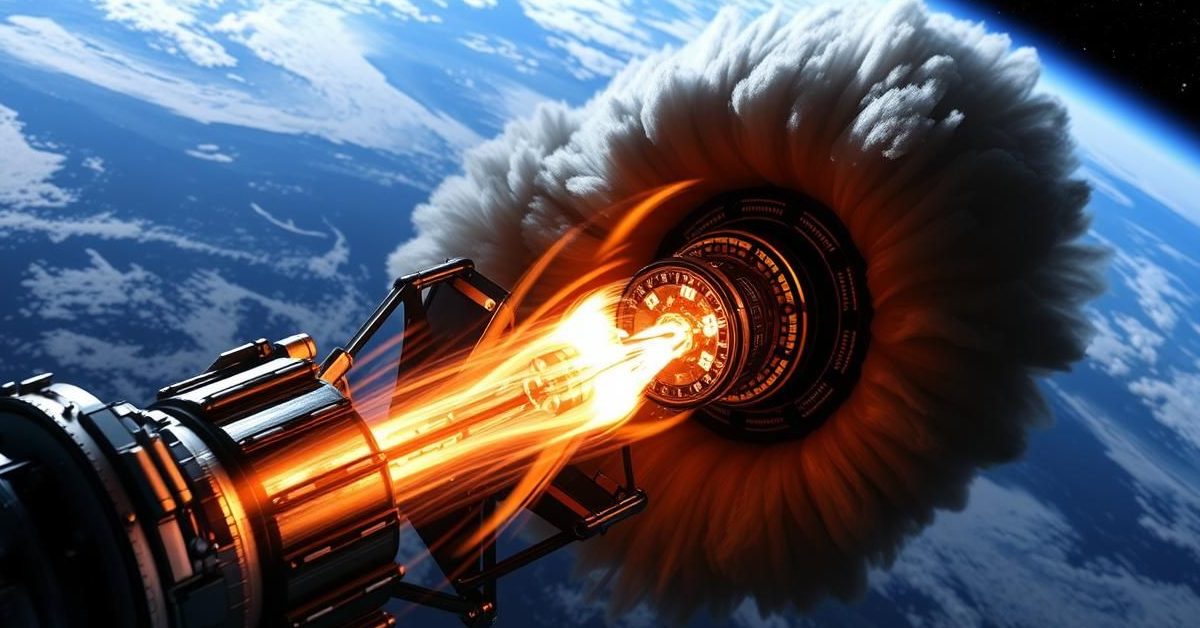From the challenges of spacecraft re-entry to the vital role of rare earth minerals and cutting-edge efforts to combat deepfakes, recent discussions in science and technology highlight diverse advancements and ongoing challenges facing our world.
Navigating Space: From Microgravity to Re-Entry
Life in Microgravity
Astronauts often experience a phenomenon known as space sickness during their initial days in microgravity. This occurs because the brain struggles to reconcile conflicting signals about gravity and acceleration received from the inner ear, which is crucial for maintaining balance on Earth.
Living in microgravity also trains the brain to disregard input from the inner ear. This adaptation can create significant challenges upon returning to Earth, as astronauts may struggle with balance, walking, and even focusing their eyes. The severity of these symptoms often correlates with the duration of their mission in space.
The Art of Spacecraft Re-Entry
When a spacecraft returns to Earth’s atmosphere, it undergoes significant deceleration due to friction. However, additional measures are essential to slow it down to safe speeds. Parachutes are commonly deployed, with drag parachutes first stabilizing the vehicle and reducing speed, followed by main parachutes for further slowing.
Crucially, spacecraft do not descend vertically. Instead, they travel at a specific angle, covering thousands of kilometers from re-entry to touchdown. This angled descent, combined with a final speed of around 25-30 km/h, ensures a safe landing.
Why Splashdowns are Preferred
Landing spacecraft in the ocean, also known as a splashdown, is a favored method for bringing astronauts back from space. While runway landings are possible, they demand more sophisticated systems and higher costs.
Water’s low viscosity and high density provide an excellent cushion, absorbing substantial shock from the impact. This helps prevent damage to the spacecraft’s structure, its payload, and ensures the safety of the crew inside.
Critical Materials: The Backbone of Modern Tech
Certain critical materials, particularly rare earth elements, are indispensable in a wide array of advanced technologies. Materials like samarium, gadolinium, terbium, dysprosium, and lutetium are vital components in electric motors, advanced braking systems, smartphones, and sophisticated missile technology.
The global supply chain for these materials, especially the processing capacity for magnets used across industries from vehicles to clean energy, is heavily concentrated. This concentration can lead to significant impacts on various sectors if supply is disrupted.
The Fight Against Deepfakes
In an innovative move to counter the rising threat of deepfake content, Denmark has proposed extending copyright protections. This amendment aims to cover a person’s facial characteristics, appearance, and voice.
If passed, the law would make it illegal to share deepfake content of individuals without their consent. This would empower people to have such forgeries removed from online platforms and seek compensation, mirroring how traditional copyright laws protect creative works.
Understanding GLP-1: A Key Hormone
GLP-1, or Glucagon-like peptide-1, plays a dual role as both an incretin hormone and a neurotransmitter. It is naturally secreted by the small intestine and the hindbrain after we eat a meal.
This hormone travels to the pancreas, where it helps regulate blood sugar by increasing insulin production and decreasing glucagon. This action, known as the incretin effect, is dependent on elevated blood glucose levels. GLP-1 also influences brain centers that control hunger and satiety, signaling when we have consumed enough food.
Defending Earth: Asteroids and Planetary Protection
Historical events like the Tunguska explosion in Siberia in 1908 remind us of the potential impact of celestial bodies. This event, caused by an asteroid, flattened over 2,000 square kilometers of forest, demonstrating the significant damage even smaller objects can inflict.
To mitigate such threats, planetary defense efforts are crucial. NASA’s DART (Double Asteroid Redirection Test) mission in 2022 successfully demonstrated a kinetic impactor technique, proving that humanity has the capability, in principle, to alter an asteroid’s path and prevent a collision with Earth.
- Spacecraft splashdowns are safer due to water’s cushioning effect during re-entry.
- Rare earth minerals are critical for modern technologies like smartphones and missile systems.
- Denmark is pioneering the use of copyright law to combat unauthorized deepfake content.
- GLP-1 is a vital hormone regulating blood sugar and influencing satiety.
- NASA’s DART mission demonstrated a viable method for asteroid deflection.
These insights underscore humanity’s ongoing efforts to master space, leverage critical resources responsibly, and adapt to the evolving challenges and opportunities presented by advanced technology.















